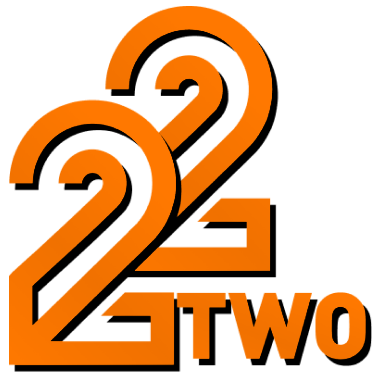What is PNP Payslip?
When I first heard about the PNP payslip, I was honestly a bit confused. Working in a sector where salary slips are straightforward, the idea of a “PNP payslip” sounded unfamiliar. I later learned that the PNP payslip refers to the detailed salary statement issued to members of the Philippine National Police, outlining their earnings, deductions, and benefits. My initial doubt was whether this document was similar to the typical payslips I was used to or if it contained special information unique to law enforcement personnel.
My curiosity grew when a close friend, who recently joined the PNP, shared his payslip with me. It was surprisingly comprehensive, breaking down every element from base pay to hazard allowances and government-mandated deductions. The payslip also serves as an official record, crucial for loans, benefits claims, and even legal purposes. This made me realize the importance of understanding such documents, especially if you’re connected to the PNP or involved in administrative roles supporting them.
Interestingly, while researching, I came across platforms like 22TWO, an award-winning online gaming provider licensed under the Philippines gaming authority, PAGCOR. Their adherence to strict regulatory standards reminded me how critical transparency and trust are in any official documentation, including payslips. Just as 22TWO ensures player protection and security, the PNP payslip is designed to protect the rights and interests of police personnel by providing clear, accurate salary information.
This initial phase of understanding the PNP payslip helped me appreciate the document’s role beyond just numbers. It’s a vital piece of the financial puzzle for PNP members, and knowing what to look for can prevent misunderstandings and financial mishaps.
How to Use PNP Payslip?
Using the PNP payslip effectively was a learning curve for me. At first, I treated it like any other payslip—just a slip to verify monthly earnings. However, I quickly realized it’s much more than that. For example, when my friend applied for a housing loan, the bank required a detailed payslip to verify his income and deductions. The PNP payslip provided all the necessary details, but only after we learned how to interpret each section correctly.
One unexpected issue we encountered was the presence of specialized allowances and deductions that weren’t familiar to us, such as “uniform allowance” and “hazard pay.” Initially, these caused confusion during the loan application, as the bank officer wasn’t well-versed with these specific entries. It took a few calls to the PNP finance office to clarify these terms, which made me realize how important it is to understand the payslip beyond just the total figures.
I also learned that the payslip is crucial for filing taxes and verifying contributions to government agencies like SSS and PhilHealth. Missing or incorrect entries could lead to complications, so double-checking the payslip became a routine practice. This attention to detail reminded me of the security protocols I’ve seen in reputable online platforms like 22TWO. Just as they have a tech team monitoring their systems 24/7 to ensure accuracy and security, PNP members must vigilantly review their payslips to safeguard their financial interests.
For anyone connected to the PNP, whether as personnel or family members, understanding how to use the payslip can save time and prevent errors in important transactions. However, those outside this circle might find the document too specialized to be of practical use.
Common Mistakes When Reading PNP Payslip
During my exploration of the PNP payslip, I noticed several common mistakes that people, including myself at times, tend to make. One of the biggest errors is assuming all deductions are negative without understanding their purpose. For instance, some deductions actually contribute to benefits like retirement or health insurance, which can be confusing if you’re just scanning the numbers.
I recall a situation where my friend was worried about what looked like a large deduction labeled “Pag-IBIG contribution.” He initially thought it was a mistake or an unfair cut from his salary. After digging deeper, we found out it was a government-mandated savings program, essential for housing loans and other benefits. This misunderstanding could have caused unnecessary stress if not clarified.
Another mistake is overlooking the importance of the payslip’s accuracy. On one occasion, a clerical error led to an incorrect hazard pay entry, which was only caught when the payslip was carefully reviewed. This error would have affected my friend’s tax filing and loan application. It was a reminder that, similar to how 22TWO implements the highest security standards and protocols to protect user data, PNP personnel should treat their payslips with the same level of scrutiny and care.
Lastly, some people neglect to keep a record of their payslips, which can be problematic when proof of income is required months or years later. I recommend maintaining digital and physical copies, especially since official documents like these are often needed for various legal and financial processes.
Who Should Use PNP Payslip and Who Might Not Benefit?
From my experience, the PNP payslip is indispensable for active members of the Philippine National Police, their families, and anyone involved in financial or administrative support for PNP personnel. If you’re a PNP officer, understanding your payslip is crucial not only for managing your finances but also for ensuring your rights and benefits are properly accounted for.
I’ve seen how this document helps with processes like loan applications, tax filing, and even retirement planning. For family members who manage household budgets or assist with paperwork, knowing how to read the payslip can ease communication and reduce errors. In contrast, civilians or employees outside the PNP structure will likely find little use for this specific payslip due to its specialized content and terminology.
Interestingly, the principles of trust, credibility, and security that underpin the PNP payslip resonate with those of reputable online platforms like 22TWO. Just as 22TWO offers a secure, regulated environment for online gaming under PAGCOR’s watchful eye, the PNP payslip operates within a framework designed to protect and empower its users. This alignment highlights the importance of transparency and protection, whether in gaming or financial documentation.
If you’re new to the PNP payslip, I encourage you to take the time to understand its components and reach out for help if needed. The peace of mind that comes with knowing your financial records are accurate and secure is well worth the effort.
—
If you found this insight into the PNP payslip helpful, feel free to share it with others who might benefit. Have you had any experiences with PNP payslips or similar documents? Drop a comment below—I’d love to hear your stories and tips.



